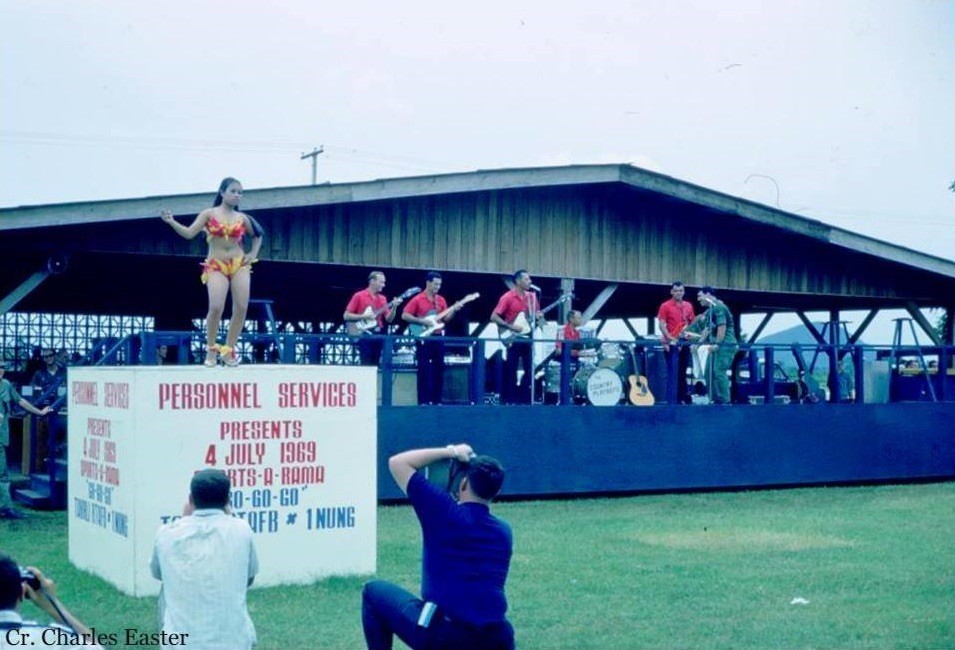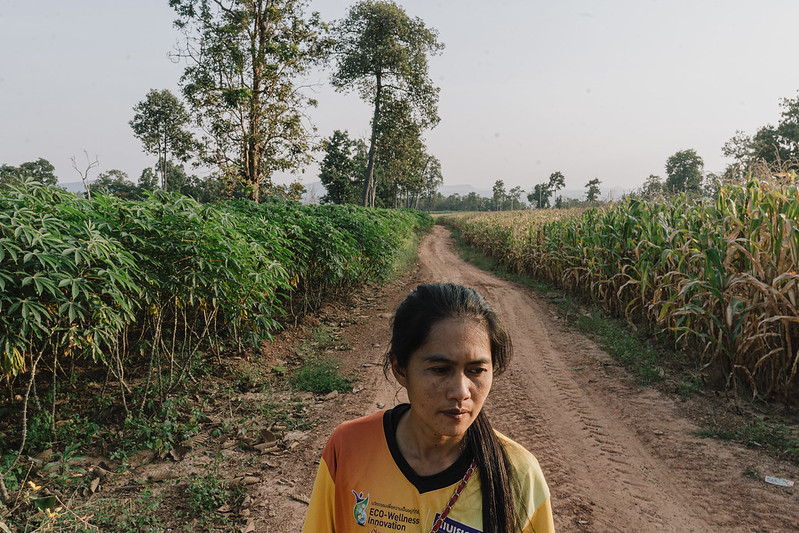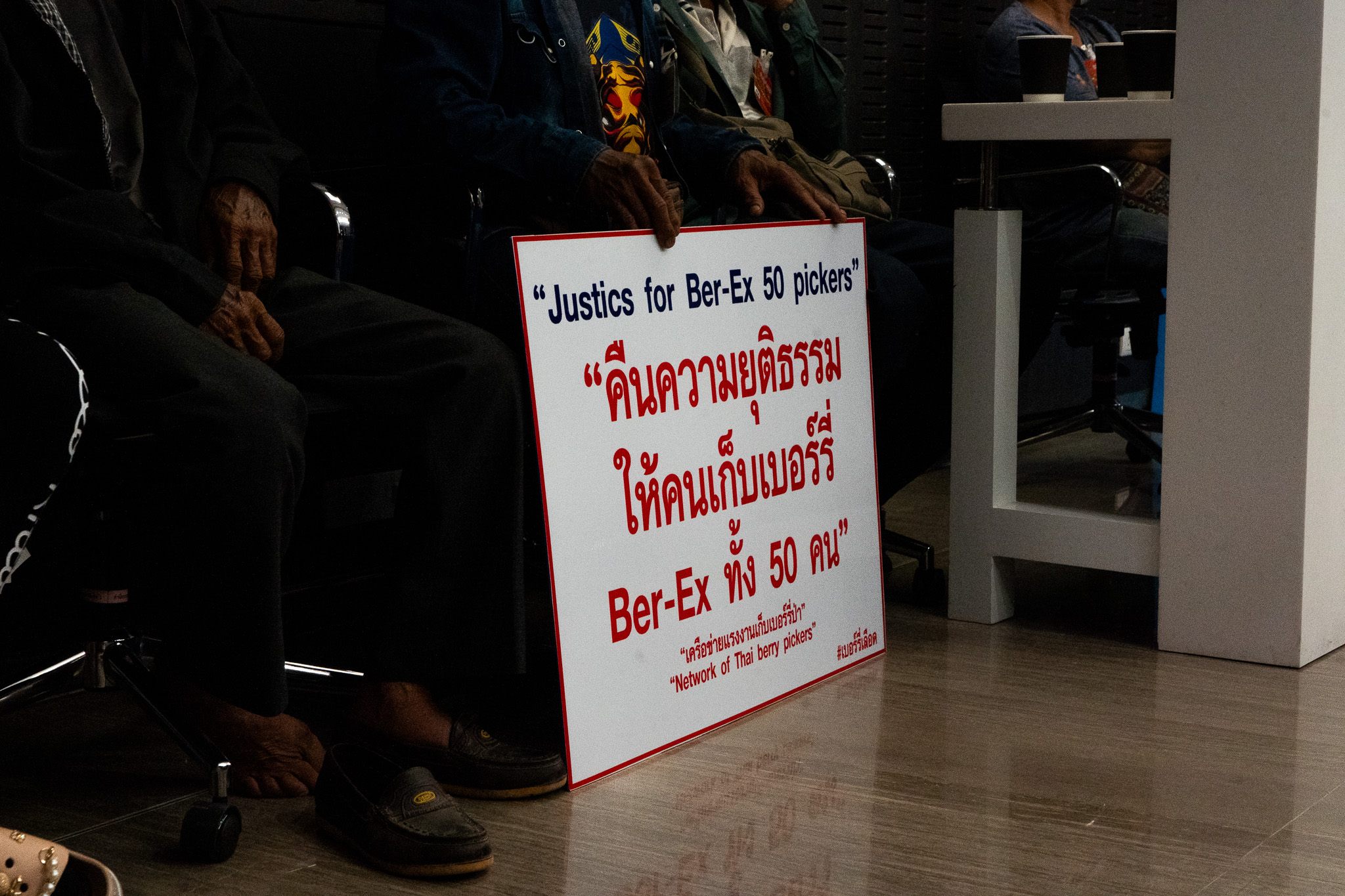UDON THANI – At a month-long exhibition titled PARALLEL : The Ramasun Station Art Trail curated by Udon Thani-based art space Noir Row, the memories and history associated with the Vietnam War-era military base formerly known as Ramasun Station are being kept alive via art exhibits which guide visitors through the remains of the camp.
Once a radio listening station staffed for over a decade by National Security Agency (NSA), United States Army, and United States Air Force (USAF) personnel, Ramasun Station allowed the US to spy on and disrupt the communications of their regional cold war adversaries during the 1960s and 70s.
In the aftermath of the 9-11 terror attacks, the camp was suspected of housing one of the CIA’s secret prisons, or “black sites.” Though the Thai government and military leaders have denied these claims.
Planted in a field some ten kilometers away from Udon Thani city, with its unmissable Wullenweber radio mast array that was nicknamed “the elephant cage” for its sheer size and appearance, Ramasun Station was like an alien installation in more ways than one. Teeming with foreigners who would busy themselves in the camp and sally out to Udon Thani city for rest and recuperation at all hours of the day, it was almost like a small American town.

An aerial photo of Ramasun Station, taken in 1973 by Phil Nickell of the 6924th Security Squadron, USAF.
With fully air-conditioned permanent structures throughout, equipped with its own cinema, swimming pool, indoor and outdoor sporting facilities, power plant, and water supply, Ramasun Station was designed and built to be self-contained and to make American personnel feel as much at home as possible during their posting to this corner of Isaan.
In 1976, a year after the Vietnam War ended, the station was turned over to the Thai government which failed to find an immediate use for it. The camp was left to decompose at the hands of nature and locals, who soon scavenged anything that could be taken away and sold from the buildings.
The Royal Thai Army eventually took ownership of the grounds and whatever was left of the buildings, turning most of it into a base for the 1st battalion of the 13th Infantry Regiment.
Off-limits to the general public for years, local history enthusiasts and artists, including Noir Row, recently succeeded in convincing the regiment’s commanding officer to turn some parts of the base into a museum that has been open to the public since last year.
Chavalit Phiangphor, known as “Tia,” and Nithiwit Thaninsurawut, who goes by “Aed,” both contemporaries of Ramasun Station while it was operational, came on June 9, the second day of the art exhibition’s opening event, to speak about what it was like to live in Udon Thani during that time.
Tia, now in his 70s and a retired judge, had just finished highschool when he was hired as a personal assistant to the head of the University of Maryland’s distance learning program at Ramasun Station. This personal connection eventually allowed Tia to be the only Thai person to graduate with a bachelor’s degree from the University of Maryland while working at the facility.
Aed was a young teenager growing up in an area of downtown Udon Thani frequented by Americans at the time. The movies screened in English for the Americans at Udon Thani’s cinemas sparked a lifelong love of all things celluloid and vinyl, which led Aed to start a photography and photo-equipment business as well as to become a radio DJ.
Together, they offered a glimpse into how this American outpost touched the lives of locals and set Udon Thani on a trajectory towards what it is today.

From left to right: Pongpon Yuttharat, Chavalit Phiangphor, Nithiwit Thaninsurawut, and Panachai Chaijirarat, Noir Row curator. Photo by Adithep Chanthet.
R&R
“I was just a boy at the time. My mother owned a pharmacy right by the Ha Yaek roundabout. For some reason our pharmacy was popular with the GIs,” recounted Aed, who is in his 60s. “I remember the area bustling with food hawkers, people selling all kinds of things, and tricycle taxis coming and going at all hours of the day”.
The 1,200 US military and NSA personnel stationed at Ramasun Station worked three 8-hour shifts a day, which meant that at any given time there were off-duty Americans ready to go into town for some rest and recreation. This had the effect of turning some parts of Udon Thani into a 24-hour party town.
Many “beer bars” opened up as a result. They sold the beverage in the small stubby bottles favored by Americans, played music familiar to American ears, and provided the venue for quite a few American servicemen to meet their girlfriends, sometimes known colloquially in Thai as “mia chao” or rented wives.

In-camp entertainment during 4th of July festivities. Photo by Charles Easter in 1969, via the อดีตวันวาน อุดรธานี Facebook page.
The PX
Like all US military installations of a certain size, Ramasun Station had a Post Exchange–better known as the PX–which sold a wide variety of imported, tax-free American goods ranging from snacks, stationery, and clothing to electronics and household appliances.
It was against the rules for Thais to buy anything from the PX since that would amount to tax evasion, so they would arrange for a friendly American to buy things for them. Unbeknownst to many, the authorities kept a list of people who were suspected of being involved in this illicit trade–Thai and American–and recorded it permanently in their personal files.
“I was one of the very few Thais who would never buy anything from the PX,” Tia proudly declared. “My boss, who apparently had some pull, showed me the list that the higher-ups secretly kept of all the Americans who bought things for Thais, and the names of the Thais, too, if known. I didn’t want to hurt my chances of visiting America some day so I made sure I stayed off that list.”
But for Aed there were no such qualms, “I started my record and film equipment collection thanks to the PX,” he said. “The vast majority of people couldn’t care less that it was illegal, and I don’t know what the American authorities thought of it but we were somehow always able to get the goods.”
According to Aed, Udon Thani’s audio-visual equipment and camera shops relied heavily on the PX to stay in business “and they did very well out of it too; they had newer gear than the shops in Bangkok and they were cheaper.”

A photo taken in 1965 with members of the 5th Radio Research Unit, Detachment “D”, US Army (left) and the 6922nd Security Wing, Detachment 4, USAF (right). The sign shows the original name, the Chang (elephant) Station, so named for its “elephant cage” radio mast array. Photo via อดีตวันวาน อุดรธานี Facebook page
Economics
Thais could also do well for themselves working inside Ramasun Station, which employed more than 1,400 Thais in various ancillary roles. Tia, whose job entailed typing documents and translating for his civilian boss, was paid a salary of 8,000 baht per month. At that time, Thais working similar white collar jobs in Udon Thani were being paid around 1,000 baht per month. To put this in perspective, a bowl of noodles then cost five baht.
The fact that most American personnel were on one-year tours–though many extended their stays by one or two more years–also ensured that there was a constant turnover of young and carefree foreigners fresh off the plane with money to spend.
“You could literally sell anything to the GIs. And I mean anything. It was like they were on holiday,” Aed recalled.
This turnover of Americans coming and going also ensured that the second-hand goods market in Udon Thani was well stocked with personal effects that were too bulky to take back home to the USA, such as audio equipment, record collections, musical instruments, and personal vehicles.

A gentleman’s club catering to Americans in 1973.
Photo by Fred Gerkens, via the อดีตวันวาน อุดรธานี Facebook page.
Locals’ reactions
Many locals were either disinterested or simply not well informed enough about the politics of the war to have an opinion on it.
“My grandmother always told me that [politics] was none of our business as she converted the townhouse that she owned into a small lodging house with individual rooms rented out to Americans who wanted to keep a place in Udon Thani city,” said Pongpon Yuttharat, an Udon Thani-based architect who was involved in the effort convert parts of the base into a museum.
Thanks to the Hollywood films flown in to entertain the American personnel in both the camp’s own cinema and those in the city, locals often had a better opportunity to watch the latest films in English and keep up with the latest western fashions than those in Bangkok.
“We were crazy about America,” said Aed. “The aviator sunglasses, the jeans, the shoes, the music, we were so cool and hip. We had better sound systems than anyone else, our musicians had real American guitars and amplifiers, and we had cooler music than could be heard in other cities. Udon was a cool place to be for young people when the Americans were here.”

The Vista, one of the cinemas which regularly screened films in English.
Photo taken in 1974 by John Madden, via the อดีตวันวาน อุดรธานี Facebook page
After the GIs left
The American presence in Udon Thani gave locals a taste of another world. They got an up-close look into another culture. The ones who worked in the camp and airbase experienced a western workplace, while those outside learned to trade and function with foreigners through commerce and other interactions.
Many picked up some English language skills as a result. After the Americans left, there was a slump which sent many locals who had worked or traded with Americans elsewhere in search of work and livelihoods to suit their horizons which, once expanded, could never shrink back to previous dimensions.
Some went to Pattaya in the seaside province of Chonburi, which continued to be a hub for various kinds of American military activity after the Vietnam war ended. Others capitalised on the skills gained from interacting with American GIs and contractors to become part of the Thai diaspora in the construction booms of Saudi Arabia and Singapore which followed.
Many of Udon Thani’s wealthiest families and most well-established businesses owe their present-day success to American war spending. Forty-four years after the Americans left, the military presence in Udon Thani is but a shadow of its former self. It no longer drives the economy, nor the popular culture and imagination of the young and fashionable like it once had.
But controversially, “the elephant cage” probably has as much claim to be a legitimate symbol for the city of Udon Thani as the giant rubber duck in Nong Prajak lake or Ban Chiang earthenware, given that the US military presence there during the Vietnam War practically gave birth to the city of Udon Thani as we know it today.






